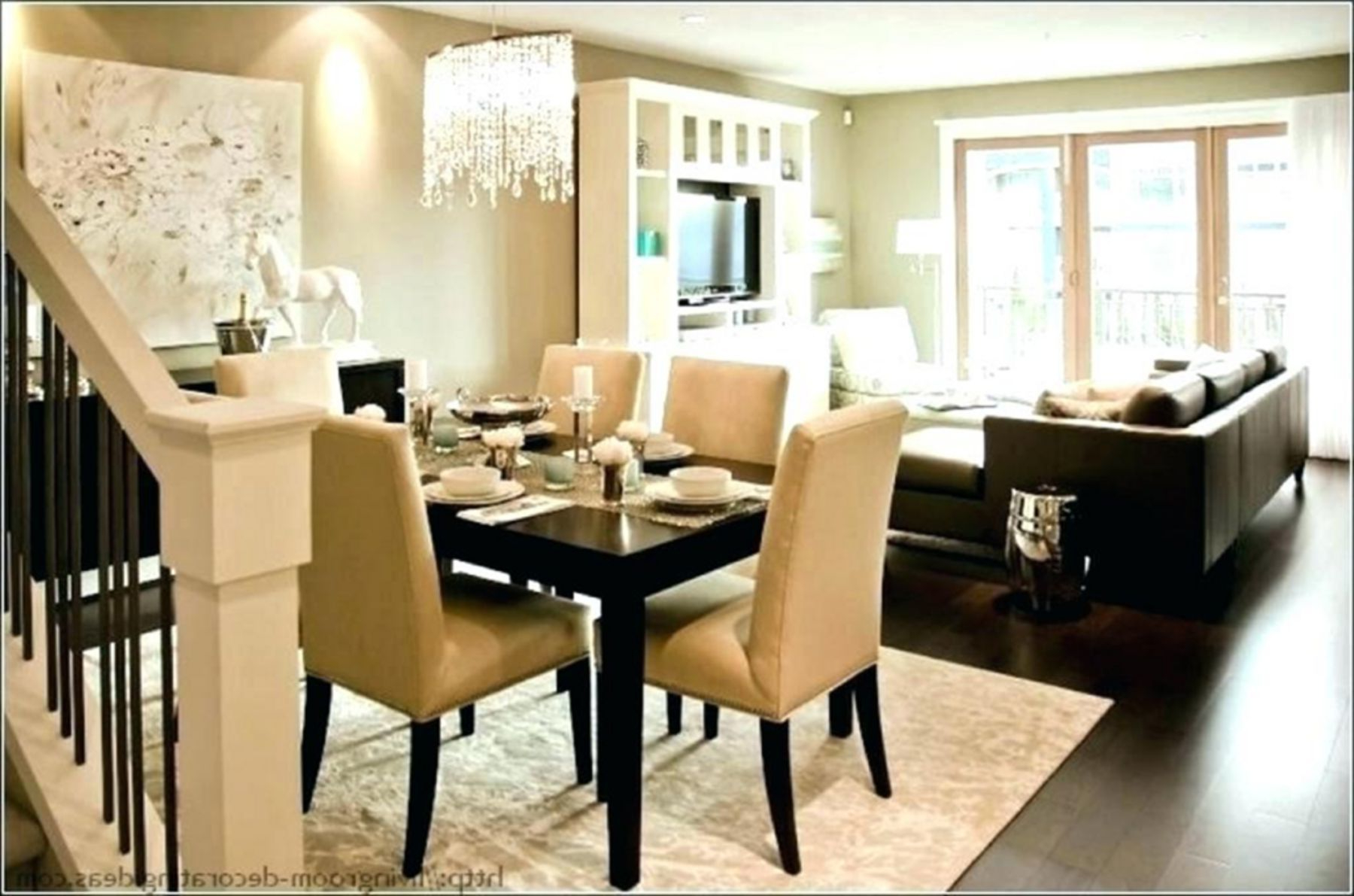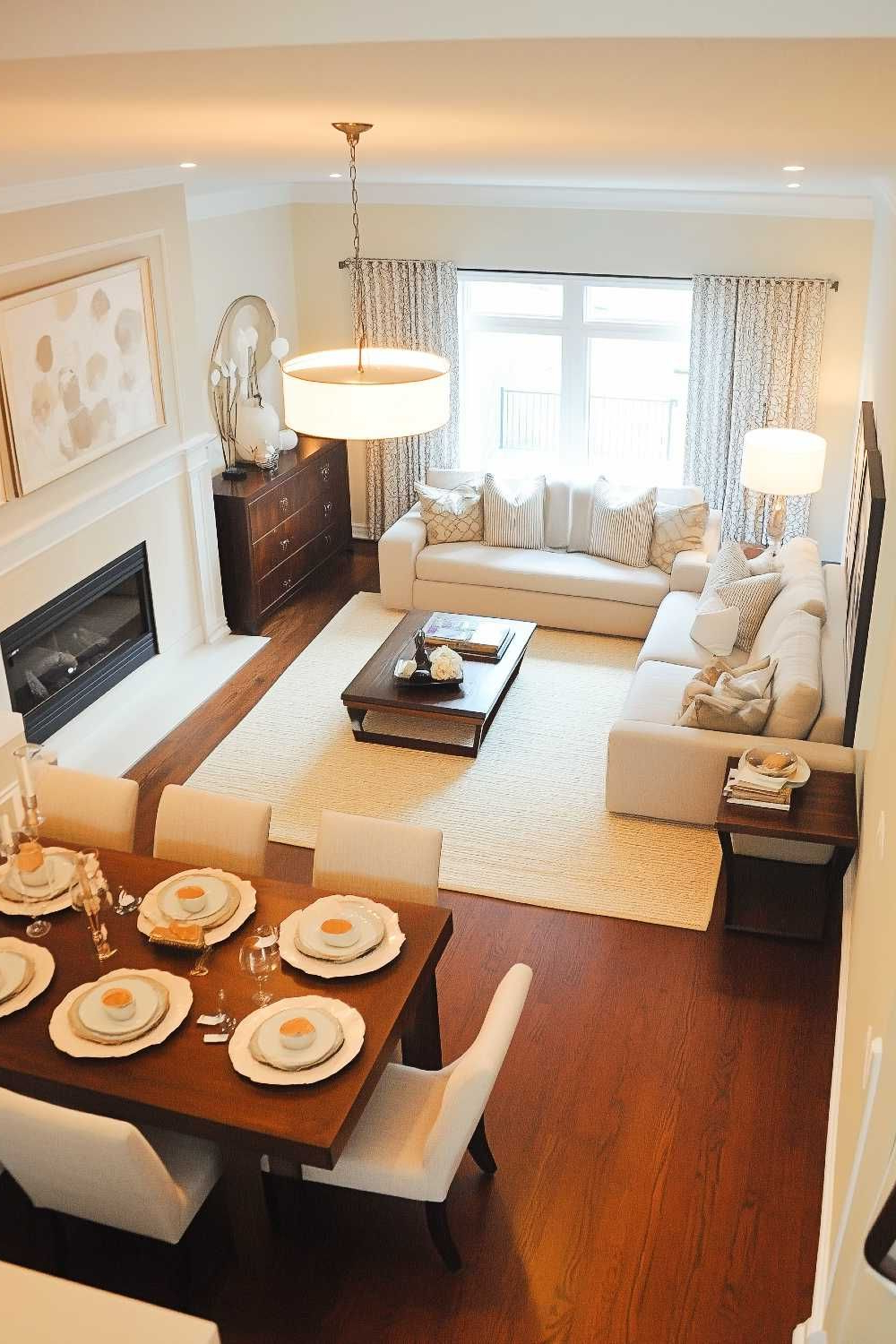There’s something magical about a room that catches the morning sun just right. Picture this: your family gathered around the dinner table, sunlight streaming through large windows, casting gentle shadows across the wooden floors. This isn’t just wishful thinking – it’s entirely achievable with the right approach. When dining and living spaces merge into one, maximizing natural light becomes even more important. It transforms not just the look of your home, but how you feel in it every single day.
Open-concept living has become the gold standard for modern homes, especially when dining and living areas share the same space. But there’s a catch – these combined areas often struggle with light. Without proper planning, they can end up feeling dark and cramped. Think about it: you want to create a space where families gather, friends visit, and memories are made. That means you need light that feels warm, inviting, and abundant. The good news? With some thoughtful strategies, you can transform your open space from dim to dazzling. The secret lies in understanding how light behaves and working with it rather than against it. Every window, every mirror, every design choice plays a role in creating that perfect glow.
Understanding Light Flow in Open Spaces
When dining and living areas are combined, you’re essentially creating a single room with multiple functions. This presents unique challenges for lighting. Light doesn’t simply bounce around like a ball – it follows specific paths based on the space’s layout, furniture placement, and even the time of day. In larger rooms, light can easily get lost or scattered, making corners seem dark and distant. The key is to think about light as a flowing river rather than a static element. You want to guide it naturally from its source through the space, ensuring it reaches every corner. Consider how the sun moves throughout the day and plan accordingly. Morning light might be golden and soft, while afternoon light could be harsher. Understanding these patterns helps you make better decisions about furniture placement and window treatments.
Strategic Window Placement and Size
Windows are the primary source of natural light in any room, but they’re particularly crucial in combined spaces. The bigger and better-placed they are, the more light you’ll capture. Large windows near the center of your room work wonders, but don’t forget about side walls too. Sometimes a smaller window in the right spot can provide unexpected illumination. Consider installing windows that face east for morning light, or south for consistent afternoon warmth. If you’re working with existing windows, look for ways to maximize their impact. Remove heavy drapes that block light and opt for sheer curtains instead. You might also consider adding window seats or benches that double as seating and light reflectors. These aren’t just functional – they’re beautiful additions that enhance both form and function.
The Power of Mirrors and Reflective Surfaces
Mirrors are incredible allies in any lighting strategy. They don’t create light, but they do reflect it dramatically. In a combined dining and living area, strategically placed mirrors can make a small space feel twice as large and significantly brighter. A large mirror opposite a window creates a beautiful reflection that brings outdoor light indoors. But mirrors work best when they’re not just slapped on a wall. Place them to reflect light sources directly into the room. For example, if you have a window on the north side that gets indirect light, position a mirror to redirect that light toward darker areas. The effect isn’t just visual – it actually changes how people experience the space. People report feeling more comfortable and energized in rooms where mirrors are used thoughtfully.
Choosing the Right Color Palette
Colors have a profound impact on how much light a space appears to have. Light colors reflect light, while dark colors absorb it. This principle is especially important in combined dining and living areas where you want everything to feel spacious and bright. White walls are a classic choice, but don’t stop there. Light beige, pale yellow, or soft gray can create a warm, welcoming atmosphere while still bouncing light around the room. Consider using different shades of the same color to add depth without sacrificing brightness. For example, a light cream dining table paired with white chairs creates a cohesive look that feels airy. When choosing paint colors, test them in different lighting conditions throughout the day. What looks great in the morning might appear too stark in the evening. The goal is consistency – a space that feels bright and inviting regardless of when you’re in it.
Smart Furniture Arrangement Techniques
Furniture placement isn’t just about comfort and style – it’s about letting light flow freely through your space. When you arrange furniture correctly, you’re essentially creating pathways for light to travel. Position larger pieces away from windows to avoid blocking the view. Instead, use smaller accent pieces like side tables or console tables to define spaces without creating shadows. If you have a dining table, place it so that it doesn’t cast a shadow over the living area. Sometimes, moving a chair or two can dramatically change how light moves through a room. Think about the flow of traffic and light simultaneously. You want people to move easily through the space while maintaining good light distribution. Consider using low-profile furniture in areas where you want to preserve natural light flow. Tall bookcases or cabinets can create unwanted shadows that make a space feel smaller and darker.
Lighting Complementary Strategies
Natural light is wonderful, but it’s not always enough. You’ll want to create a system that works with both daylight and artificial lighting. This means thinking about how your lights complement rather than compete with natural sources. Install dimmer switches to control artificial light levels throughout the day. During the bright afternoon hours, you might want to reduce artificial lighting to let the sun shine through. At night, you’ll want to ensure that your artificial lights don’t create harsh shadows that compete with natural light. Consider using warm-toned bulbs during evening meals to create a cozy atmosphere that still feels connected to the day’s natural rhythms. Layer your lighting with table lamps, floor lamps, and ambient ceiling lights to create flexibility. This way, you can adjust the mood and lighting depending on what you’re doing in the space.
Maximizing natural light in combined dining and living areas isn’t just about making your home look better – it’s about enhancing how you live. When you create spaces filled with natural light, you’re investing in your family’s wellbeing and happiness. The principles we’ve discussed aren’t just rules to follow – they’re tools to help you understand your space better. Whether you’re designing a new home or renovating an existing one, remember that light is your most powerful design element. It affects everything from your mood to your appetite to how you interact with others. Start small – maybe with a new curtain choice or a strategic mirror placement. Then build from there. The beauty of working with natural light is that it rewards patience and attention to detail. Your combined dining and living area will thank you for taking the time to get it right. After all, a home that truly feels bright and welcoming is a home that feels like a true sanctuary.















